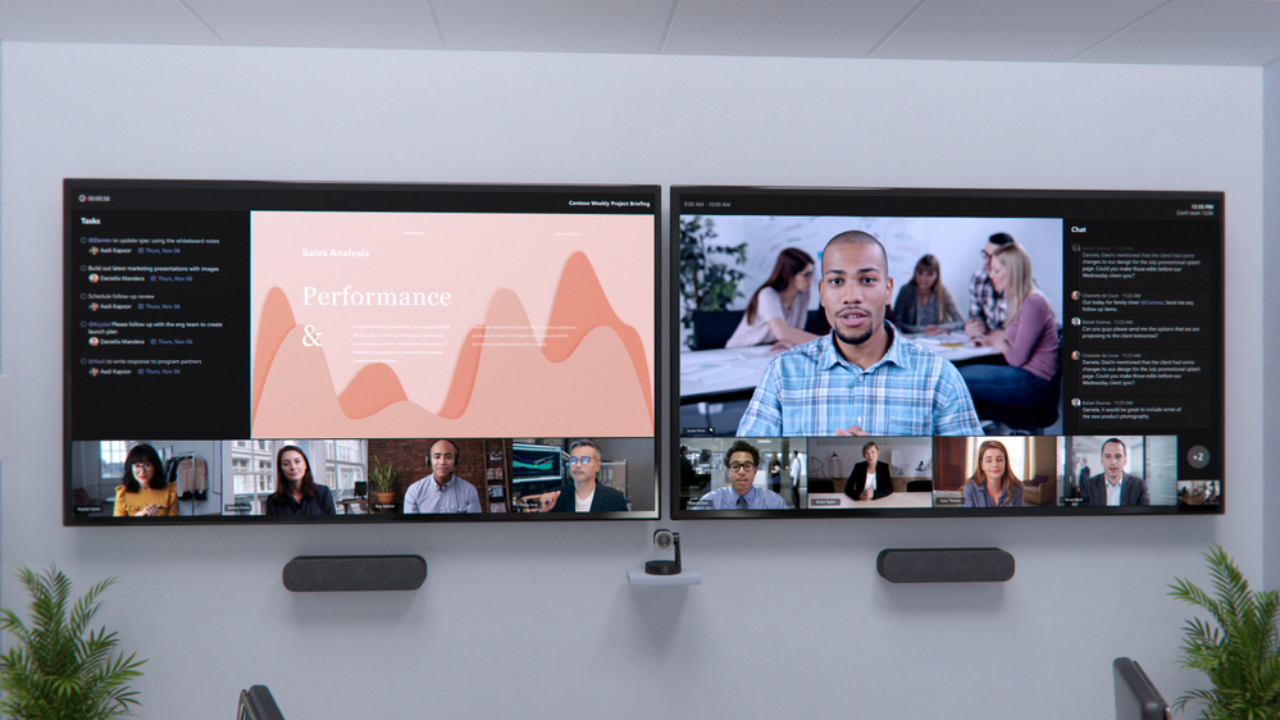Microsoft Teams upgrade aims to make WFH (again) more like being face-to-face in the office
Microsoft Teams gets a hybrid working boost


Microsoft has recently rolled out a host of updates for Teams, with the firm now prepping its latest improvement to the platform, called Front row.
Front row will deliver an immersive room layout that makes interactions feel more natural. With remote working fuelling a huge shift to collaboration platforms like Teams, the new feature will look to make video calls feel more life-like, adding a layer of realism to virtual interactions.

Front row, a new content layout for Teams Rooms
The last few years have seen offices opening up only to then close again with the undulating waves of the pandemic. People’s habits have changed over the past year, so have their expectations. As detailed in a new entry in the firm’s product roadmap, Microsoft Teams users will soon be able to enjoy the new Front row video call layout (via TechRadar). Though still under development, it should be available to all Teams users via the layout picker by the end of January.
“Front row is a new layout that enables better hybrid meetings,” says Microsoft, which is desirable given that we spend so much time glued to our desktop screens. Even the glistening displays of the best 4K monitors can tire eyes after a grueling day at work. The new Front row feature on Teams looks to tackle this, however: “It brings remote participants to eye level with participants in [conference] rooms and adds additional data like chat to give in-room users better context of what’s happening in the meeting.”
Hybrid working
Interestingly, this new Teams feature appears to be specifically addressing hybrid working, as opposed to exclusively remote working. Visually, Front row moves the video gallery to the bottom of the screen so in-room participants can see remote colleagues face to face across a horizontal plane – akin to if they were in the same room. By the same token, meeting content is surrounded by items like work agendas, tasks, and notes, which can be updated in real-time, helping you stay engaged, productive, and, crucially, able to pivot between working from home and the office within a single unified workspace.
Amongst other newly-introduced smart organization features, Microsoft is increasingly committed to improving the user working experience for the hyper-contextual situation we find ourselves in. A small change like the new Front row layout, Microsoft adds, can help create “a more inclusive environment” and iron out the difficulties we face in moving between virtual and physical workspaces.
Get all the latest news, reviews, deals and buying guides on gorgeous tech, home and active products from the T3 experts

Luke is a former news writer at T3 who covered all things tech at T3. Disc golf enthusiast, keen jogger, and fond of all things outdoors (when not indoors messing around with gadgets), Luke wrote about a wide-array of subjects for T3.com, including Android Auto, WhatsApp, Sky, Virgin Media, Amazon Kindle, Windows 11, Chromebooks, iPhones and much more, too.